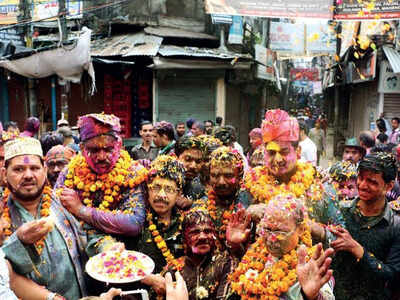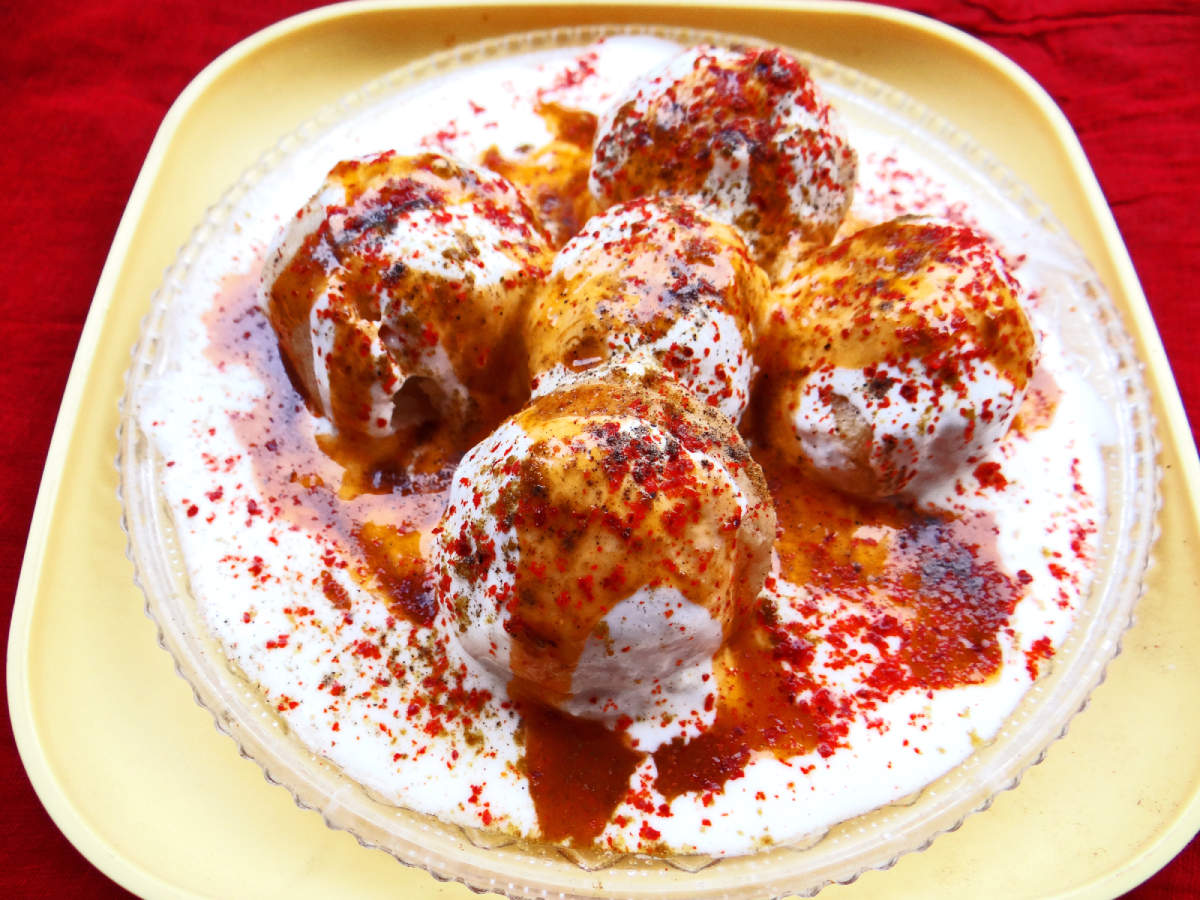
KANPUR: The coronavirus scare failed to dampen the spirit of the devotees visiting the Ganga Mela held here on Sunday. Several locals paid tributes at various city ghats, including Sarsaiyya and Massacre Ghats, to the revolutionaries who fought for the country’s freedom struggle on this occasion.
Ganga Mela is celebrated every year after Holi on ‘Anuradha Nakshtra’ in memory of the revolutionaries who were released by the British government after being made captive during the 1857 War of Independence.
During the day time, people after smearing each other with colours, head towards the banks of Ganga for a dip, and because of this unique trend, the festival got its name ‘Ganga Mela’. The localities known as ‘Purana Kanpur’ like Hatia, Nayaganj, Birhana Road etc are the places where Ganga Mela celebrations are organised at a grand level.
Continuing with the tradition, the locals took out processions, which culminated at various city ghats. In these processions, the people, carried big sized drums filled with colour on ‘thelas’ pulled by buffaloes with people dancing and playing with ‘rang and gulal’ on the tunes of popular Holi songs and Bollywood numbers.
Since early morning, a crowd was seen in the Old City areas like Birhana Road, Hatia, Maniram ki Bagia etc palying colours.
The procession started from Rajjan Babu Park from Hatiya and as it reached Birhana Road, the residents of the area threw colours from rooftops on the revellers. The ‘matkis’, filled with colours, hung on Birhana Road, were broken by youths.
Meanwhile, the biggest attraction of the day was at Sarsaiya Ghat which wore a festive look. Several representatives of political parties and the district officials also took part in the Ganga Mela and the Holi Milan function.
People were seen hugging and wishing each other. The administration had deployed a large number of policemen at the ghats. District magistrate Brahmadeo Ram Tiwari, DIG Anant Deo and other administration officials also exchanged Ganga Mela greetings.
Pushpendra Jaiswal, a local claimed, that origin of the Ganga Mela could be traced to 1942 when the Britishers imposed a blanket ban on playing Holi, but residents of Hatia, performed the ‘Holika Dahan’ and played with colours to mark the protest against Britishers and to save their tradition. This led to the arrest of around 72 people for disobeying the British decree.
Enraged over this, the denizens played Holi continuously for seven days until all the captives were released by the Britishers.
“It is for this reason, that this day is not a mere festival for the people, but is a celebration to commemorate the victory of Indians over the British rule,” he added.
Ganga Mela is celebrated every year after Holi on ‘Anuradha Nakshtra’ in memory of the revolutionaries who were released by the British government after being made captive during the 1857 War of Independence.
During the day time, people after smearing each other with colours, head towards the banks of Ganga for a dip, and because of this unique trend, the festival got its name ‘Ganga Mela’. The localities known as ‘Purana Kanpur’ like Hatia, Nayaganj, Birhana Road etc are the places where Ganga Mela celebrations are organised at a grand level.
Continuing with the tradition, the locals took out processions, which culminated at various city ghats. In these processions, the people, carried big sized drums filled with colour on ‘thelas’ pulled by buffaloes with people dancing and playing with ‘rang and gulal’ on the tunes of popular Holi songs and Bollywood numbers.
Since early morning, a crowd was seen in the Old City areas like Birhana Road, Hatia, Maniram ki Bagia etc palying colours.
The procession started from Rajjan Babu Park from Hatiya and as it reached Birhana Road, the residents of the area threw colours from rooftops on the revellers. The ‘matkis’, filled with colours, hung on Birhana Road, were broken by youths.
Meanwhile, the biggest attraction of the day was at Sarsaiya Ghat which wore a festive look. Several representatives of political parties and the district officials also took part in the Ganga Mela and the Holi Milan function.
People were seen hugging and wishing each other. The administration had deployed a large number of policemen at the ghats. District magistrate Brahmadeo Ram Tiwari, DIG Anant Deo and other administration officials also exchanged Ganga Mela greetings.
Pushpendra Jaiswal, a local claimed, that origin of the Ganga Mela could be traced to 1942 when the Britishers imposed a blanket ban on playing Holi, but residents of Hatia, performed the ‘Holika Dahan’ and played with colours to mark the protest against Britishers and to save their tradition. This led to the arrest of around 72 people for disobeying the British decree.
Enraged over this, the denizens played Holi continuously for seven days until all the captives were released by the Britishers.
“It is for this reason, that this day is not a mere festival for the people, but is a celebration to commemorate the victory of Indians over the British rule,” he added.
Coronavirus outbreak
Trending Topics
LATEST VIDEOS
City
 Covid-19 news: UK national tests +ve; all 289 offloaded at Kochi airport
Covid-19 news: UK national tests +ve; all 289 offloaded at Kochi airport  Congress workers who put up posters shaming prominent UP BJP leaders arrested
Congress workers who put up posters shaming prominent UP BJP leaders arrested  Coronavirus: 218 Indians evacuated from Italy, land in Delhi, will be quarantined for 14 days
Coronavirus: 218 Indians evacuated from Italy, land in Delhi, will be quarantined for 14 days  Coronavirus news: Andhra local body polls postponed for six weeks
Coronavirus news: Andhra local body polls postponed for six weeks
More from TOI
Navbharat Times
Featured Today in Travel
Quick Links
Kerala Coronavirus Helpline NumberHaryana Coronavirus Helpline NumberUP Coronavirus Helpline NumberBareilly NewsBhopal NewsCoronavirus in DelhiCoronavirus in HyderabadCoronavirus in IndiaCoronavirus symptomsCoronavirusRajasthan Coronavirus Helpline NumberAditya ThackerayShiv SenaFire in MumbaiAP Coronavirus Helpline NumberArvind KejriwalJammu Kashmir Coronavirus Helpline NumberSrinagar encounter
Get the app



